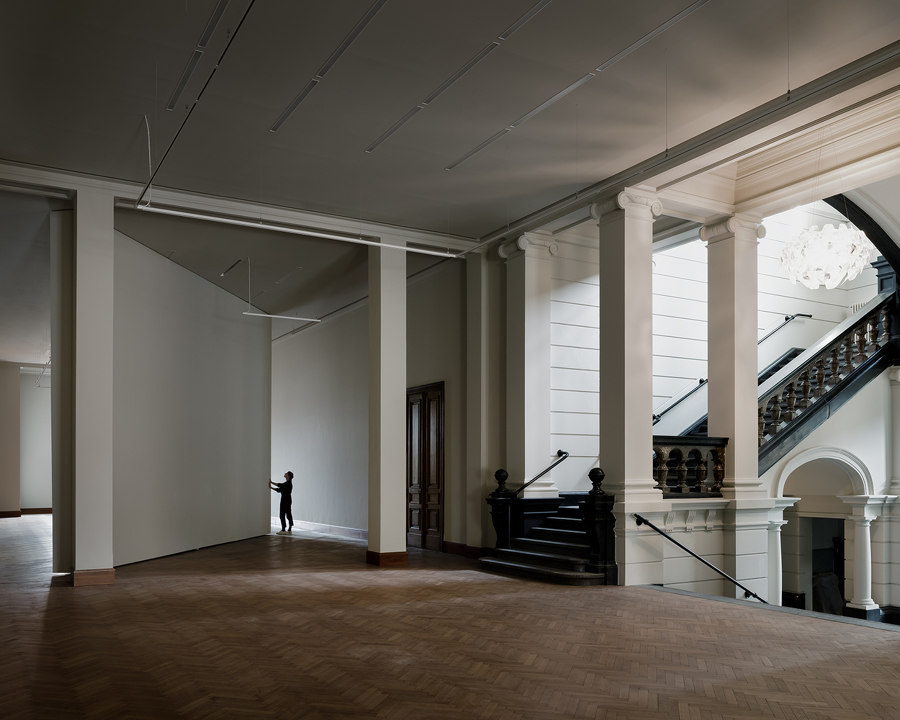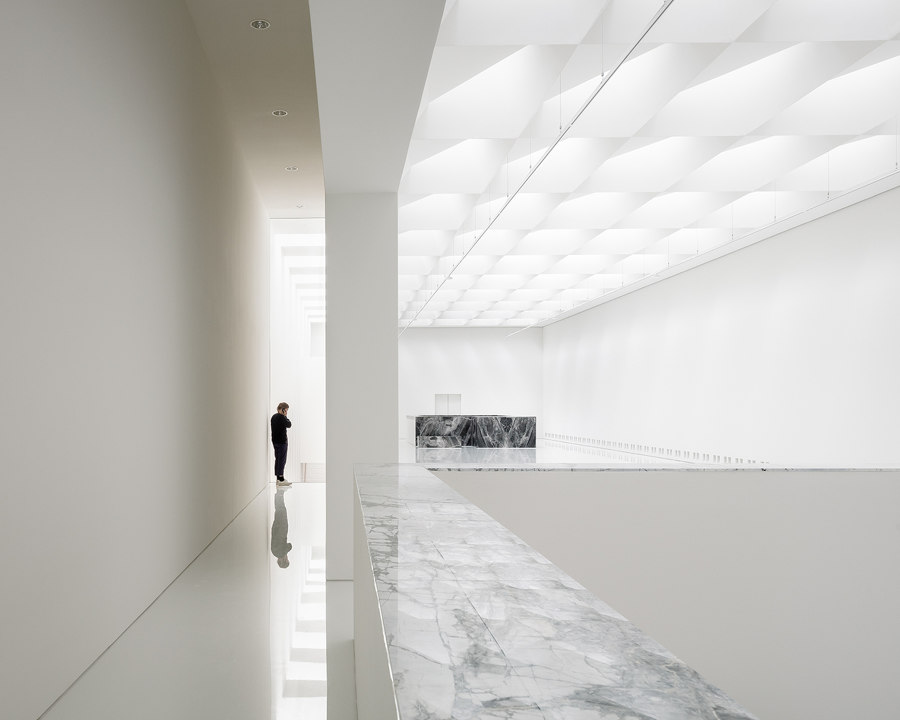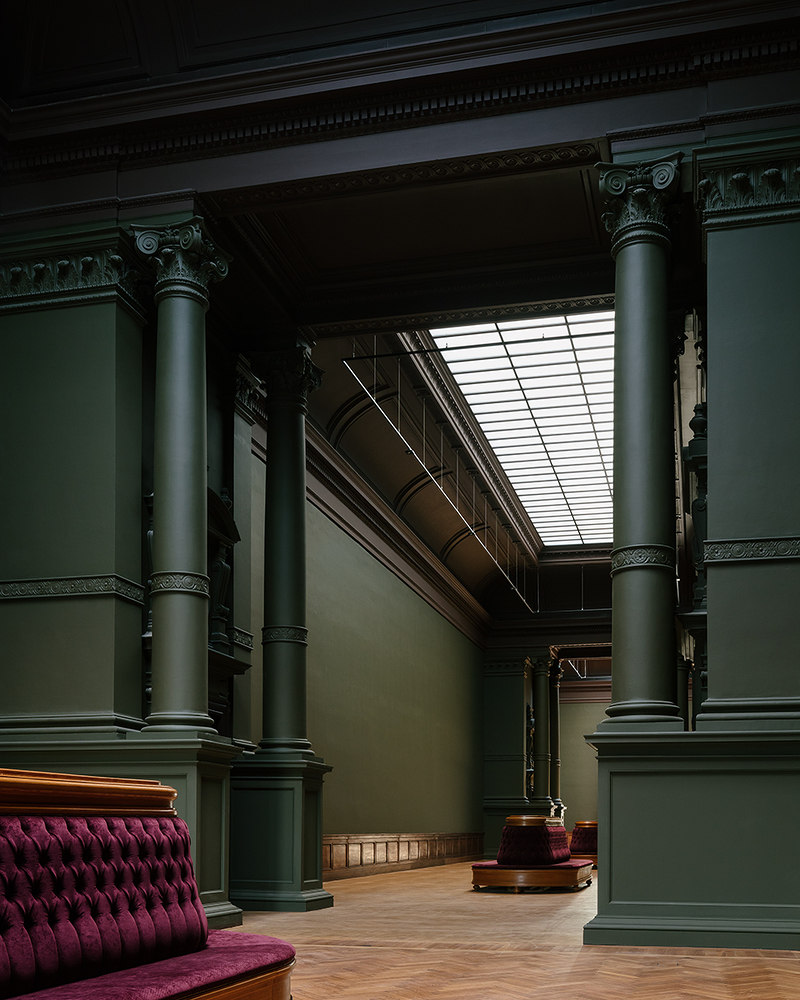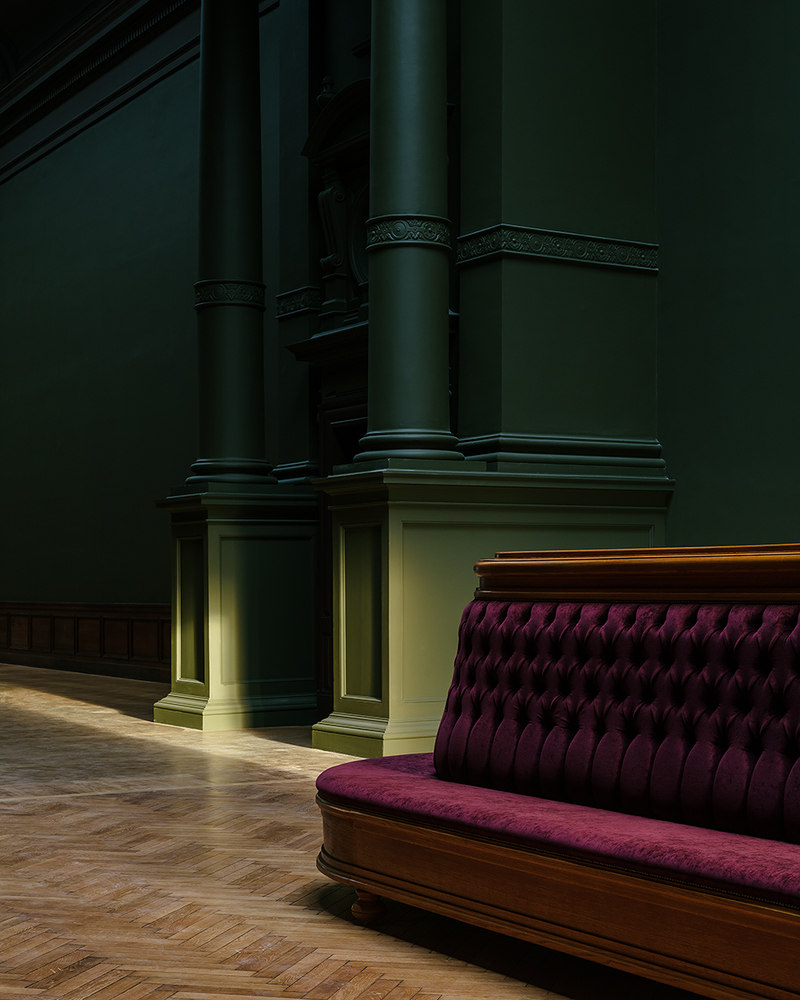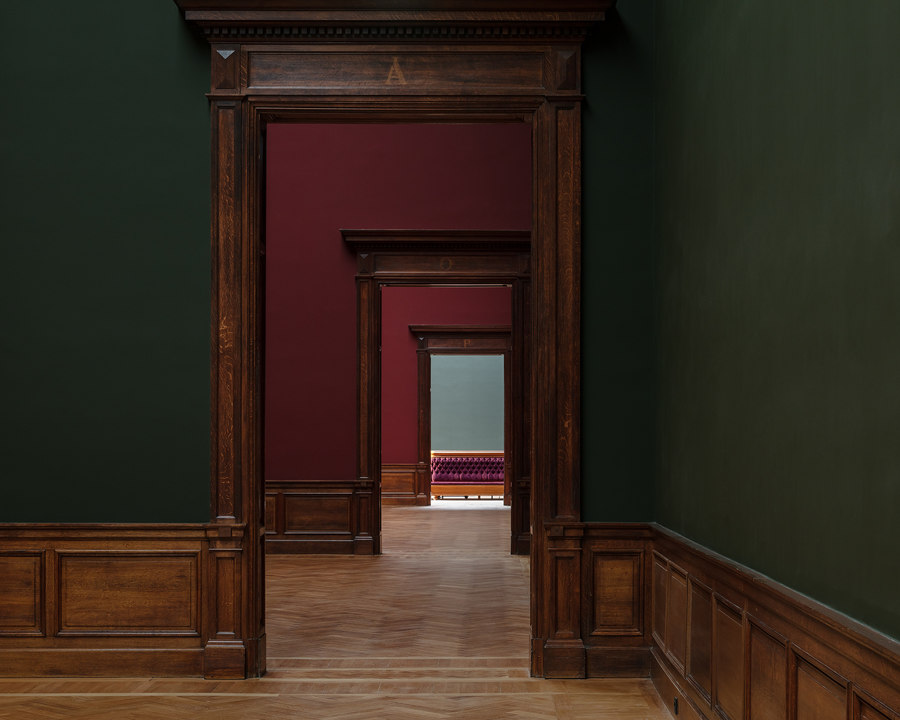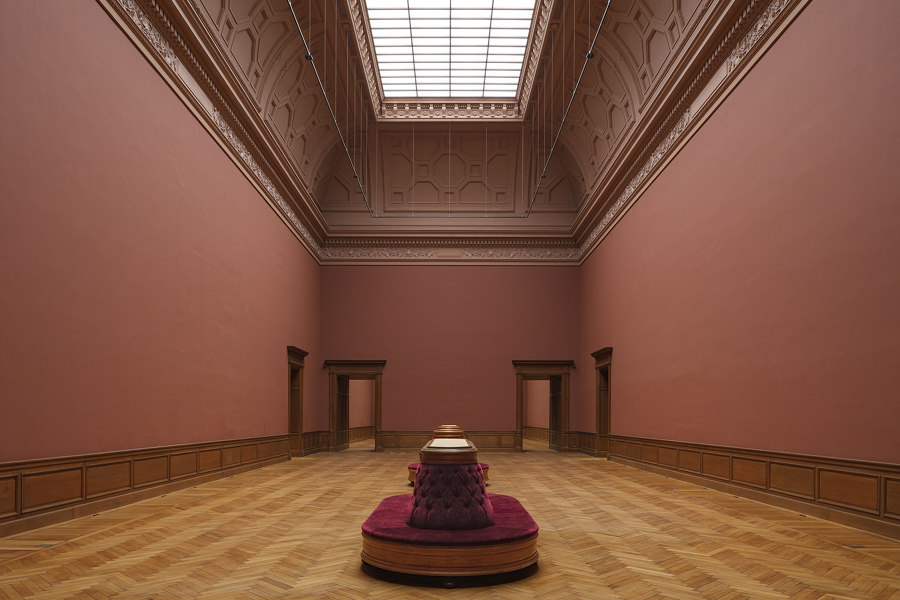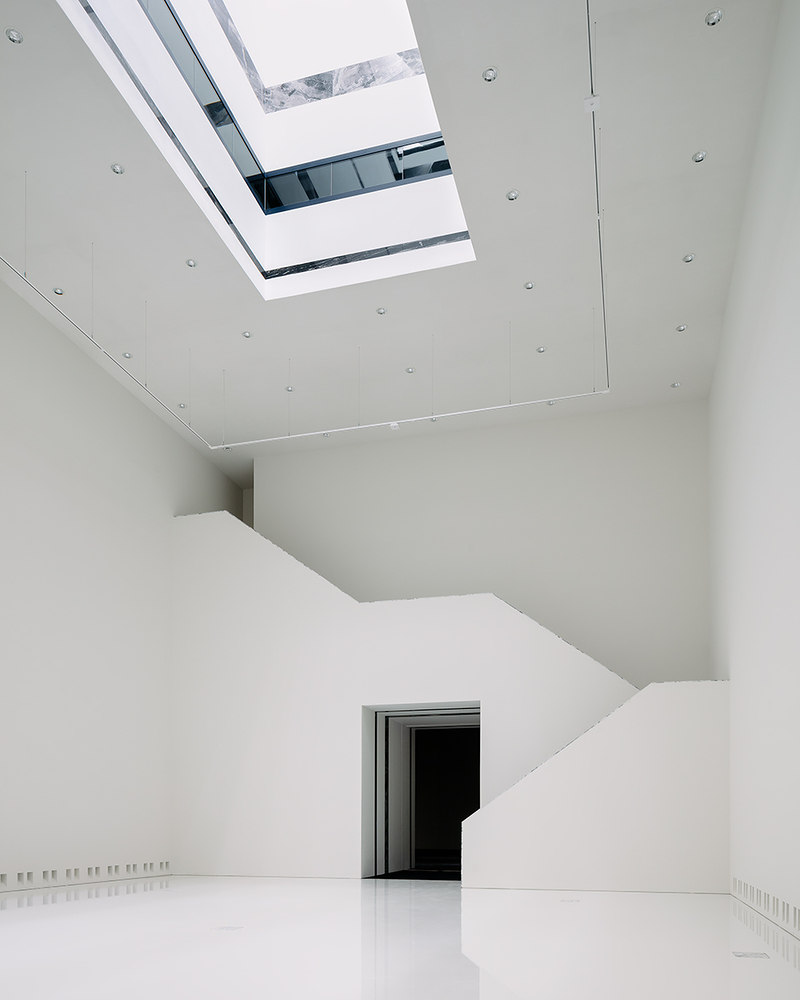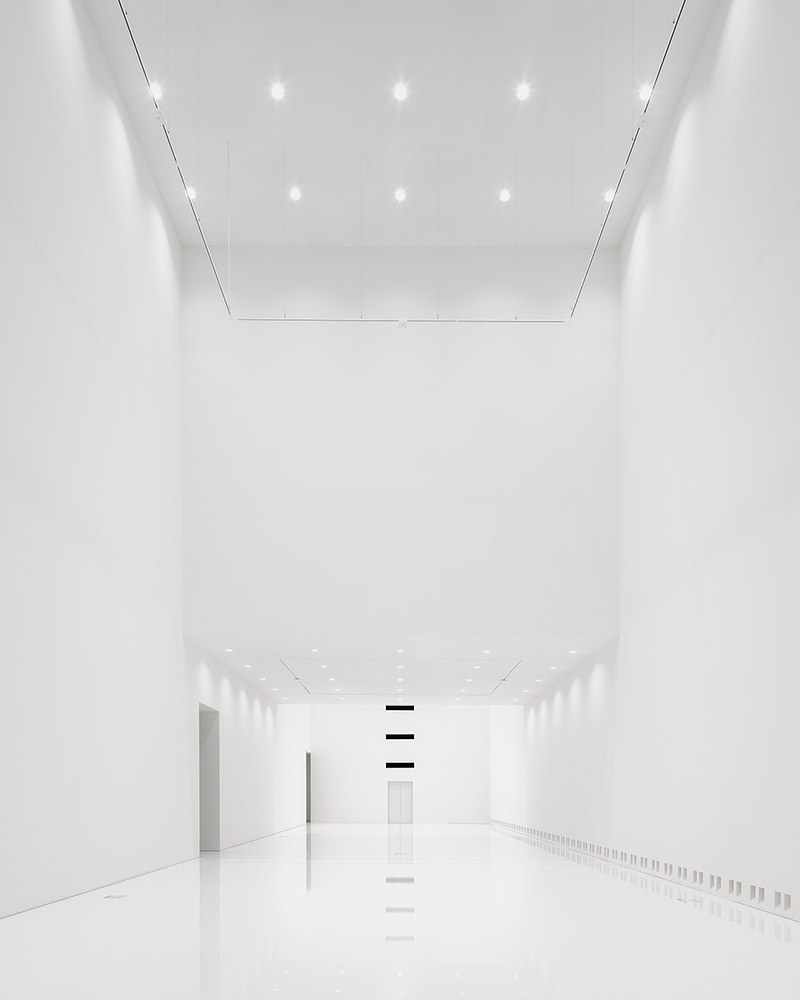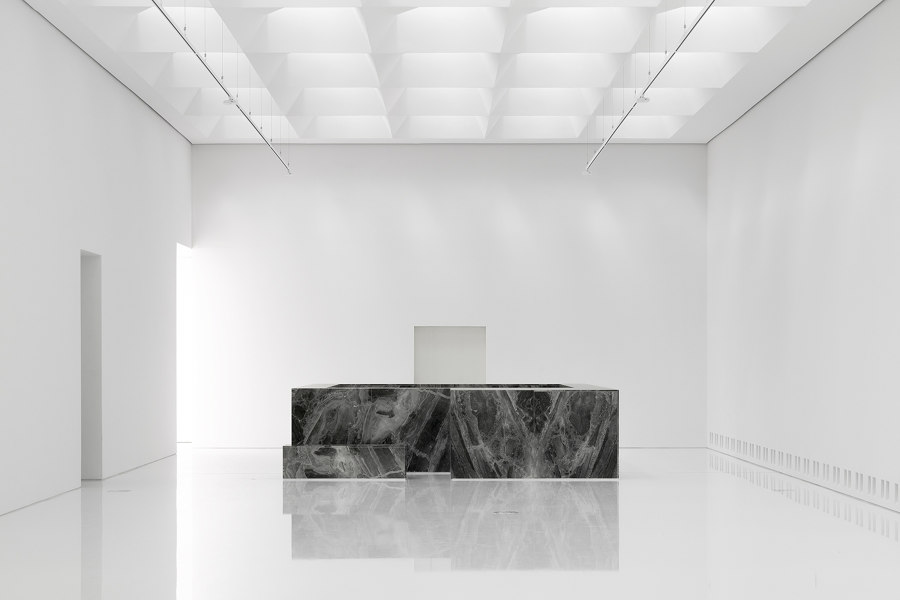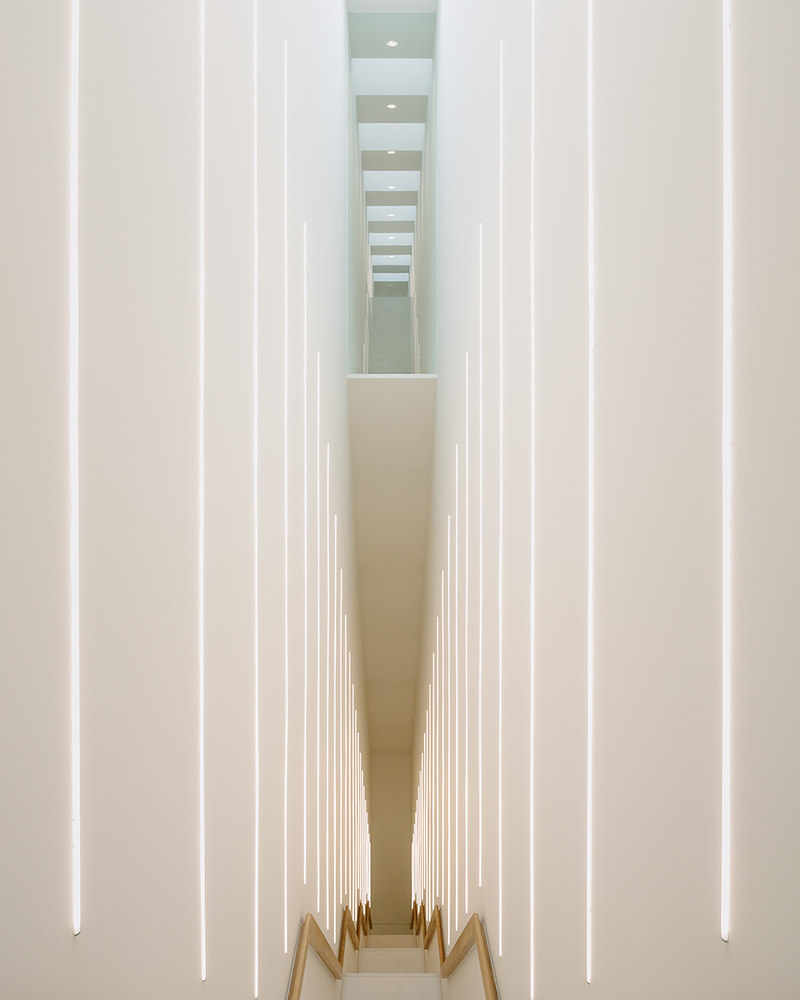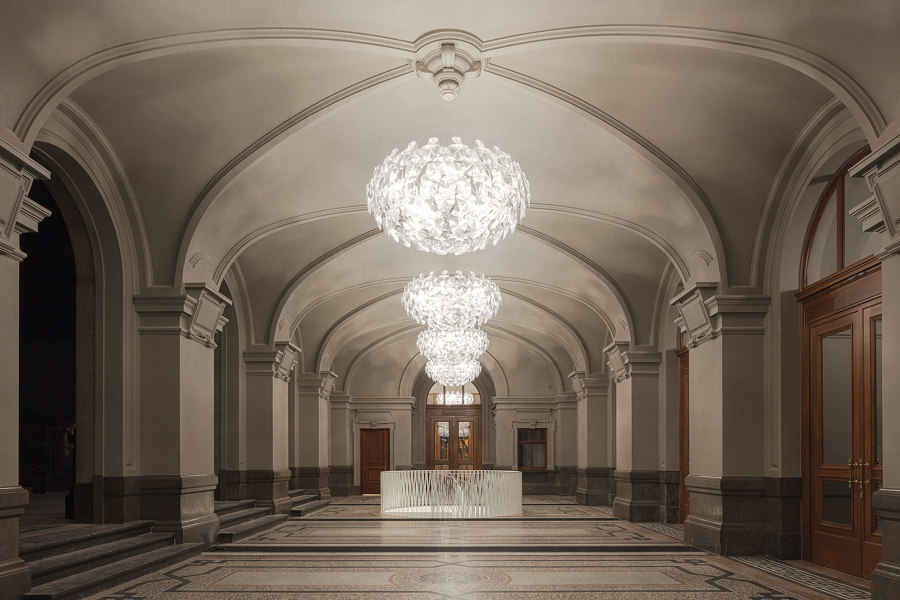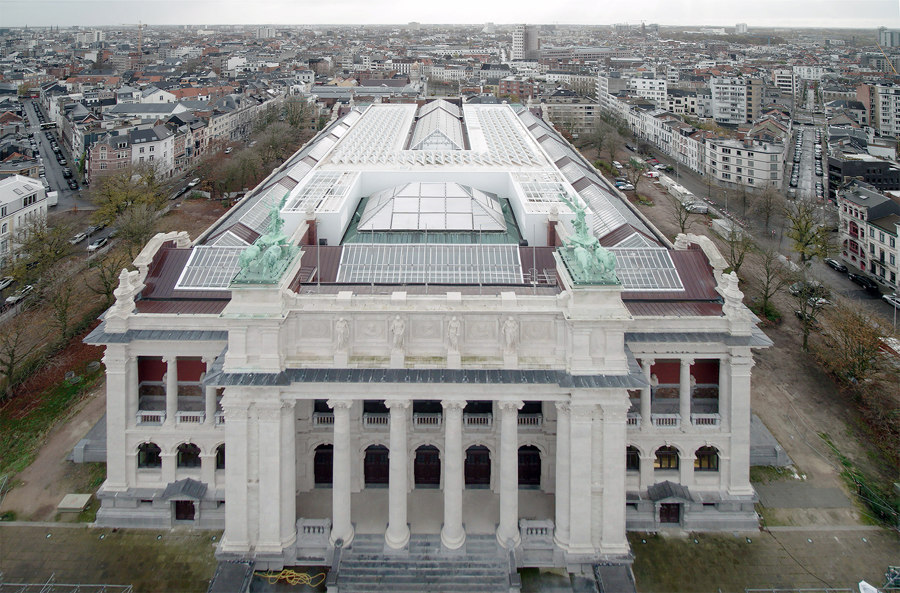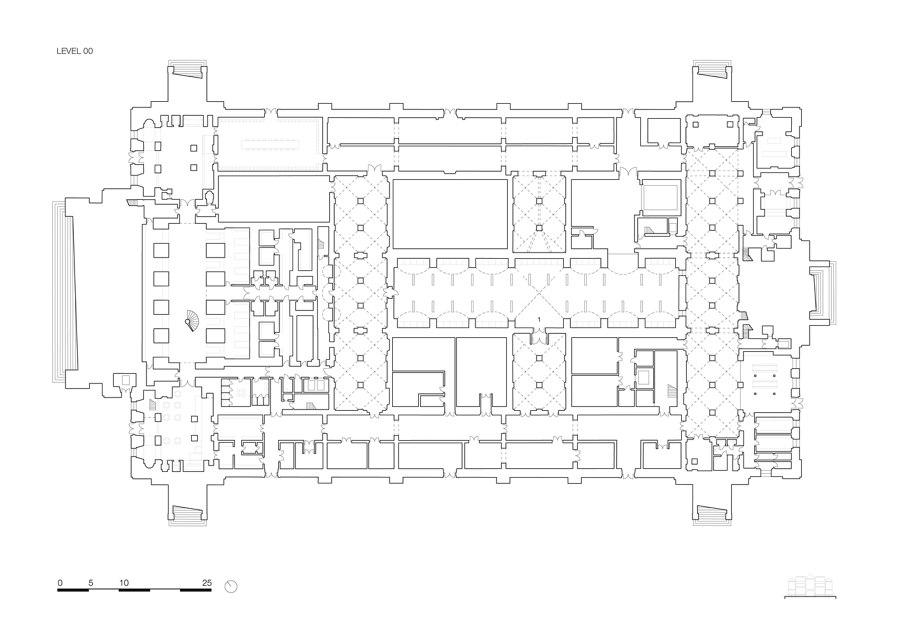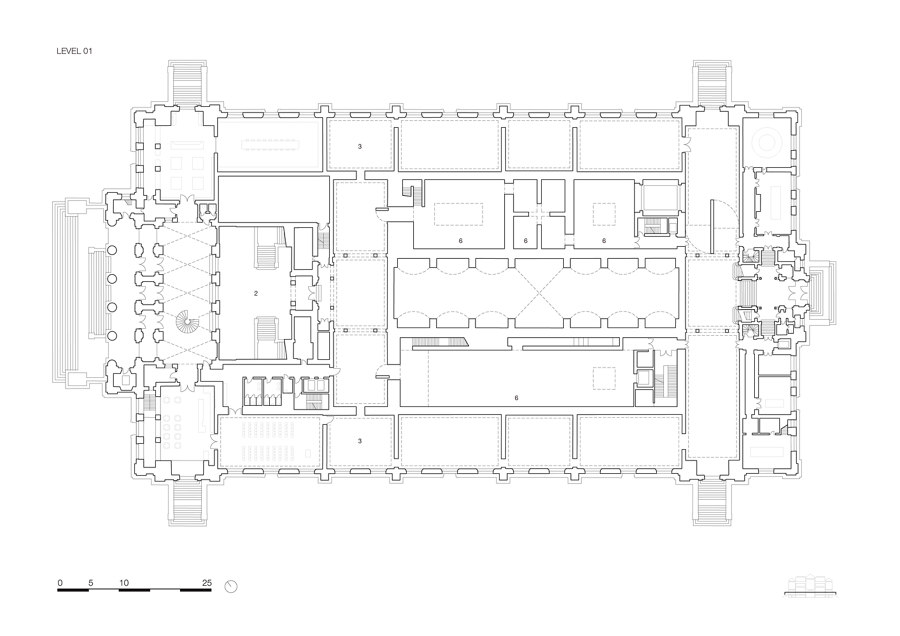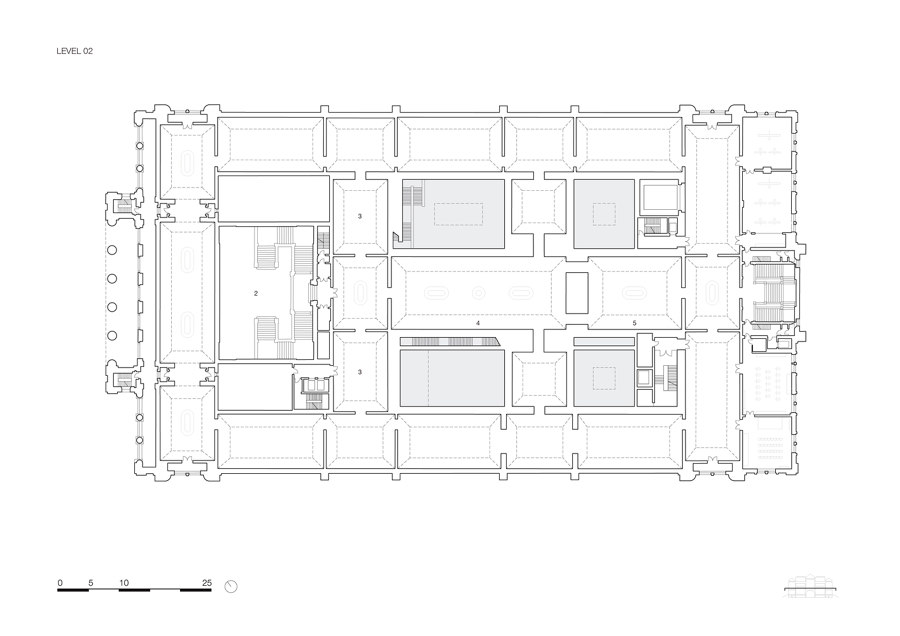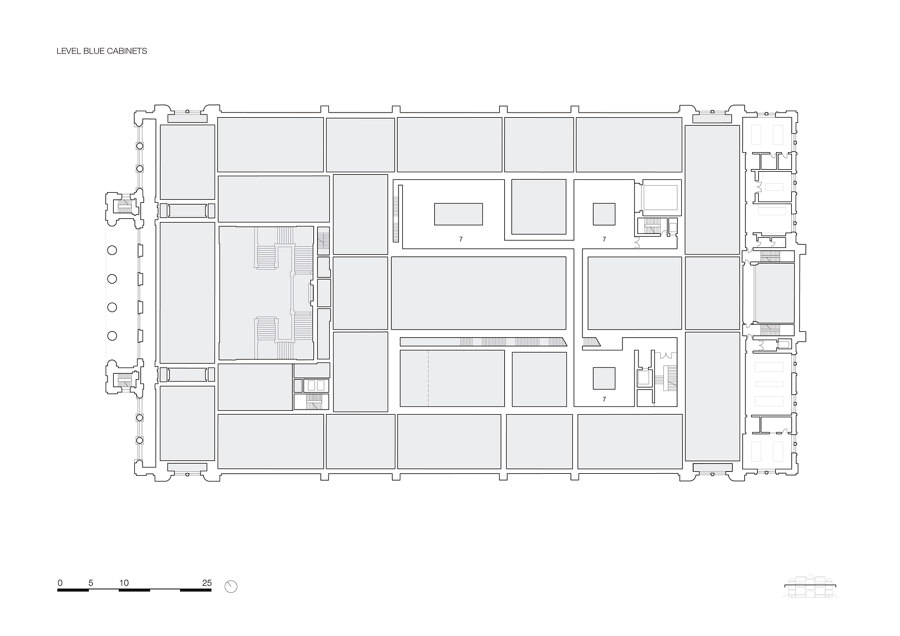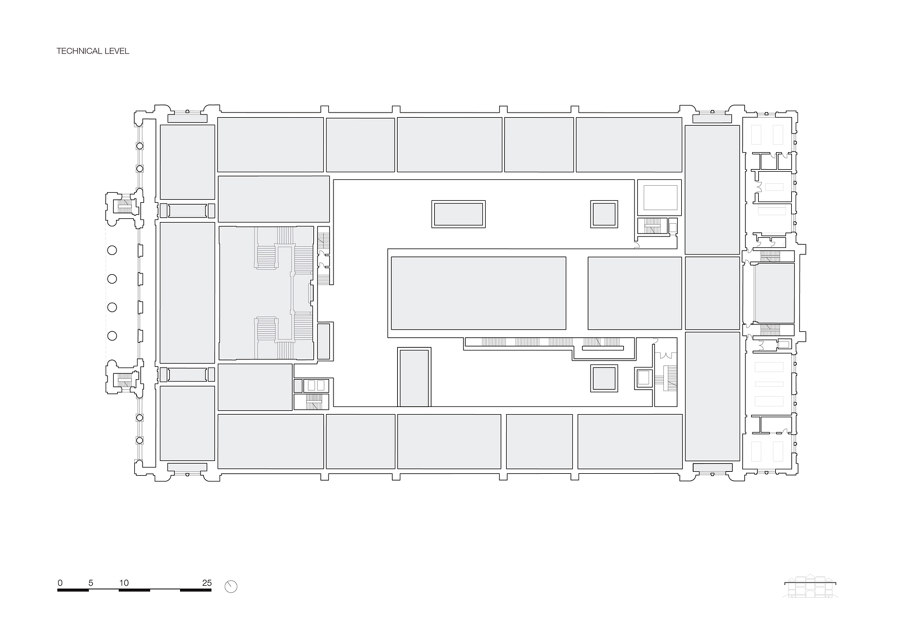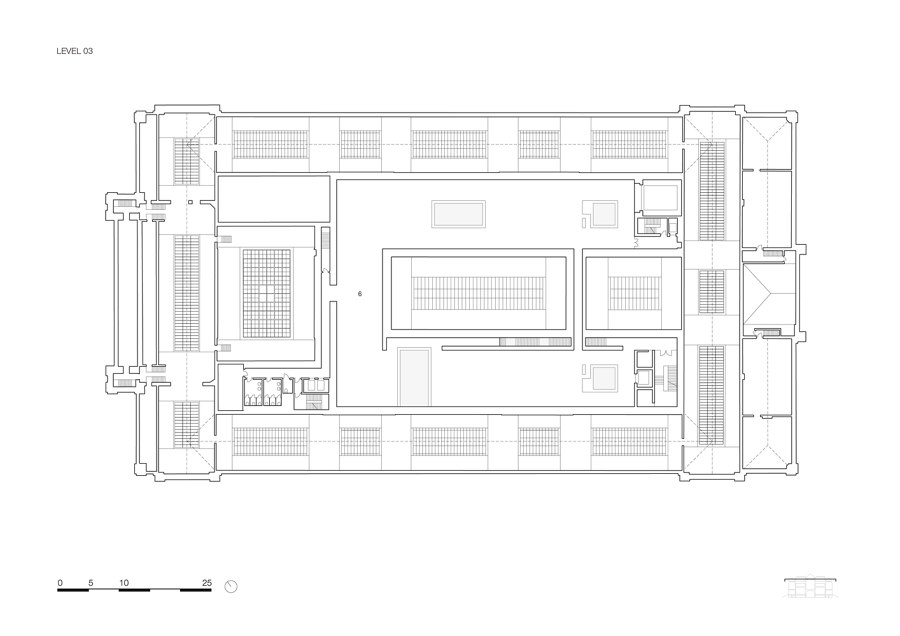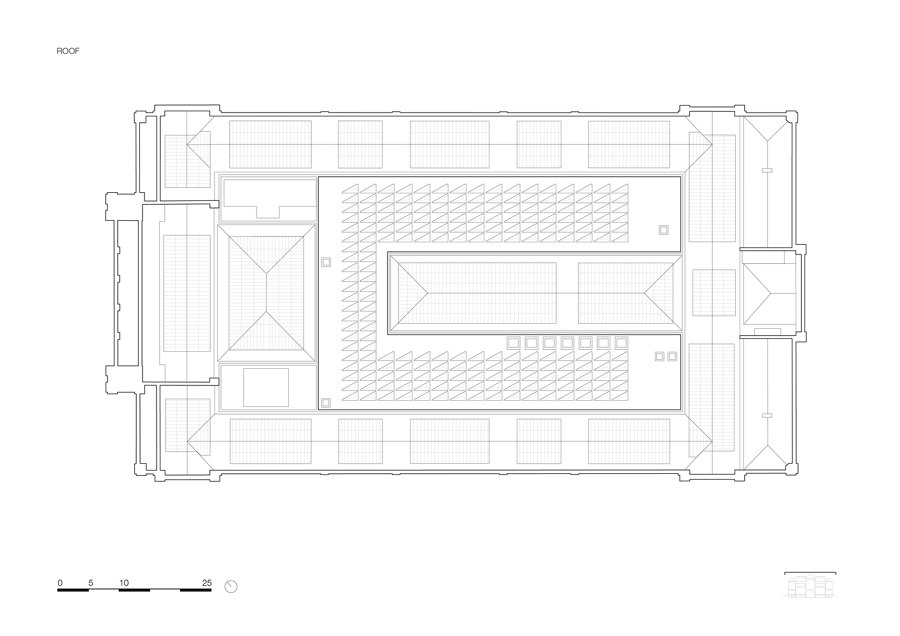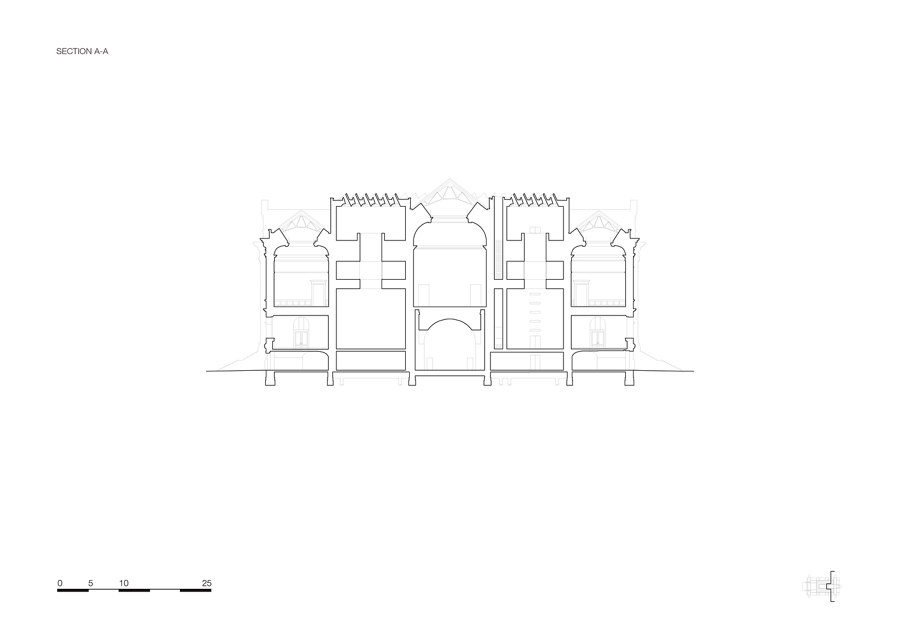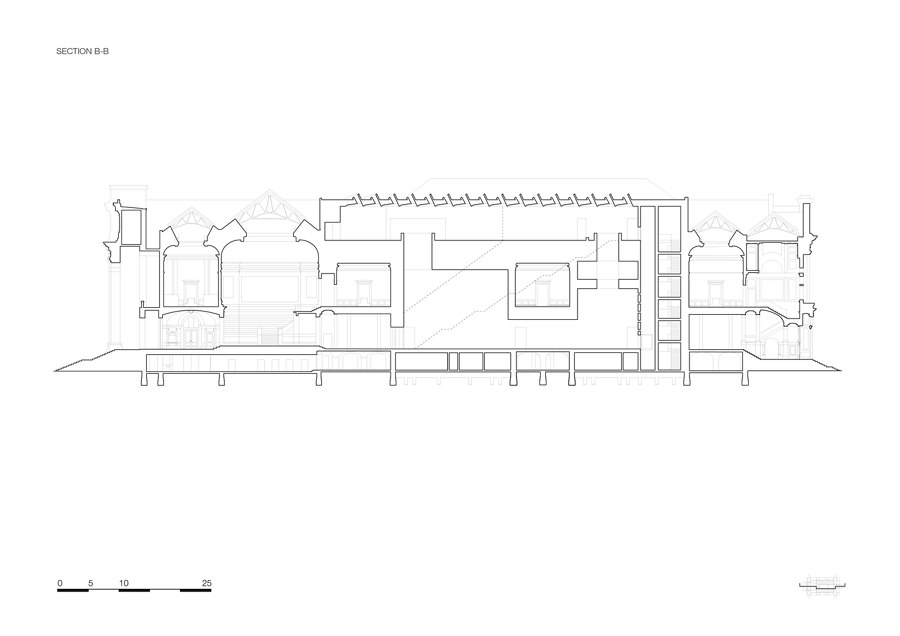After winning an international competition in 2003 commissioned by the Flemish Government, Dutch architecture office KAAN Architecten has worked intensively on the complex masterplan, renovation, and extension of the Royal Museum of Fine Arts in Antwerp bringing contemporary allure to a glorious, overlooked beauty of the 19th century.
In addition to being one of the last examples of bold neoclassical architecture in the city of Antwerp, the museum houses a rich art collection that embraces seven centuries of art: from Flemish Primitives to expressionists, from paintings to drawings and sculptures. The Department of Culture, Youth, and Media of the Flemish Government has invested approximately 100 million euros in the overall renovation of the building.
Rising above the remains of the 16th-century citadel and intertwined within the remarkable star-shaped urban fabric, the museum was originally designed in the 19th century by architects Jacob Winders and Frans van Dyck. It opened to the public in 1890. KMSKA was conceived as a daylight museum, where visitors would enjoy a promenade surrounded by stunning artworks as well as the external landscape, witnessed through its multiple lookouts over the city and the inner patios. During the 20th century, new developments in exhibition design and museum distribution brought fundamental changes to the building's layout, modifying the original circulation route and the connection with the city.
In the early 2000s, while KAAN Architecten started working on the museum’s masterplan, renovation, and extension, the southern neighbourhood of Antwerp began to progressively gain greater value through public investments and urban transformation. One of the architect's most intrepid initiatives was to completely conceal the extension of the museum within its existing inner structure, the new addition is not visible from the outside, in order to highlight the heritage value and the resilience of the outstanding 19th-century building, nestled in this fast-changing district.
The extension co-exists with the powerful historical structure without diluting its monumental character. KMSKA is now divided into three realms: a public entrance area (feel), central exhibition spaces (see), and offices (work) at the rear side of the building.
From Leopold de Wael square, a grand staircase grants access to the museum: large restored oak doors open onto the entrance hall, which features several museum facilities such as an interactive information zone, a café, an auditorium, a bookshop with a coffee corner and a circular staircase to the street floor level where a library, a cloakroom and a second entrance for large groups are located.
The entrance hall leads to the majestic de Keyserzaal (named after artist Nicaise de Keyser), which serves the pivotal role of introducing the visitors to two different routes and experiences: one, going up the grand staircase, leads to the main floor of the renovated 19t h century museum; the other, continuing straight ahead, leads visitors to the new 21s t century museum.
While visiting the historical museum, guests walk through an enfilade of exhibition rooms tinted in dark pink, green and red; oak doors, tall columns, and ceiling ornaments in plasterwork collectively convey a feeling of ancient grandeur. The colour palette chosen during the renovation process directly relates to the museum's original colours. On the first floor, large windows visually connect the bright yet modest interiors with the surroundings, while on the second floor, the main halls are lit by wide glass canopies and equipped with elegant sofas for those enjoying the art masters.
The collection depot has been relocated inside the original location of the air-raid shelter bunker underneath the two main exhibition halls, at the street level. Extra-large paintings, taller than the high doors, can travel from the depot through one of the original 19th-century hatches to the upper floors. From this position and following a specific route, a track of slender vertical hatches can deliver the paintings to the contiguous halls.
KAAN Architecten has created an architectural concept for KMSKA that takes the form of an enchanting journey where visitors explore the two contrasting and dialoguing museums, which unveil themselves little by little. The experience is never predictable yet always in balance: both routes are challenging and designed to serve the art.
Design team:
KAAN Architecten
Principals In Charge: Kees Kaan, Vincent Panhuysen, Dikkie Scipio
Project Senior Leader: Walter Hoogerwerf
Project Team: Valentina Bencic, Maicol Cardelli, Alice Colombo, Aksel Çoruh, Davis de Cos Roman, Sebastian van Damme, Paolo Faleschini, Raluca Firicel, Eva French i Gilabert, Michael Geensen, Narine Gyulkhasyan, Marco Jongmans, Martina Margini, Giuseppe Mazzaglia, Laura Ospina, Maurizio Papa, Ismael Planelles Naya, Giacomo Rizzi, Ralph van Schipper, Kim Sneyders, Koen van Tienen, Niels Vernooij, Martin Zwinggi
Primary Client: Departement Cultuur, Jeugd en Media (Vlaamse Overheid)
Mandated Client: Het Facilitair Bedrijf (Vlaamse Overheid)
User: Koninklijk Museum voor Schone Kunsten Antwerpen (KMSKA)
